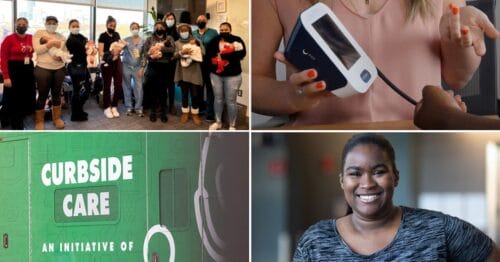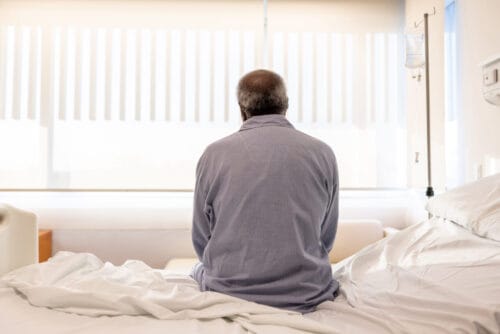A New Scholarship Takes Aim at the Lack of Diversity Among Pharmacists
September 22, 2021

Getty Images
78% of pharmacists are white. BMC's All-In Pharmacy Scholarship Program takes a step toward addressing opportunity gaps, diversifying its workforce, and providing optimal pharmaceutical care.
More than three-quarters of pharmacists in the U.S. are white, according to the 2019 National Pharmacist Workforce Study. At 11%, the second largest segment of the profession identifies as Asian. The remaining, approximate, 10% identify as either Black, American Indian, Hispanic/Latinx, or “other.”
“It hasn’t changed much since the 1980s,” says Jessica Fortune-Chery, PharmD, BCACP, a clinical pharmacy specialist.
Although it may seem daunting to spur change when the demographics have remained practically stagnant for four decades, progress comes by taking just one step in a new direction. A team from Boston Medical Center’s pharmacy department is aiming to chart a path toward diversifying the hospital’s pharmacist workforce with the new All-In Scholarship Program.
“This was a grassroots effort that started with taking an honest look and saying, ‘We can do better in this particular area,'” says clinical pharmacy specialist Christopher Fagbote, PharmD, BCACP, who is a member of the seven-person All-In scholarship program committee.
The ultimate goal of the scholarship is to encourage underrepresented students to apply to BMC’s Pharmacy Residency Program, then ideally, go on to build careers at the hospital.
The All-In Scholarship Program for pharmacy students in practice
The scholarship was developed for students of color who were enrolled in an accredited pharmacy school located outside New England.
Recipients of the All-In scholarship spend 12 weeks of their final year of pharmacy school—a time earmarked for participating in clinical internships to gain practical experience under the guidance of a preceptor—at BMC. They take part in two, six-week rotations in one of the following areas: internal medicine, inpatient operations, community, ambulatory care or electives (like critical care or pediatrics). Students are paired with a preceptor in their area of interest for each rotation.
On top of gaining clinical expertise and a $10,000 stipend, students are paired with a mentor, who is a person of color. The mentor guides them in a variety of areas, from getting acquainted with a new city to discussing their professional goals.
The program’s concept is rooted in addressing opportunity gaps for advancement in pharmacy that could be served by increased institutional partnerships. To that end, the committee was strategic in how they spread the word about the scholarship and began outreach to pharmacy programs at historically Black colleges and universities.
“Having a diverse provider demographic is really important for optimal patient care.” Click To Tweet
Applicants to the All-In Pharmacy Scholarship Program were evaluated based on their pharmacy work experience and achievements, as well as their commitment to diversity, equity, and inclusion. Two students were selected for its first year; however, three more of the applicants decided to join BMC this fall on their own accord.
The importance of racial diversity in the pharmacy department
The experience for scholarship recipients and all pharmacy residents brings two advantages. One, at the safety-net hospital, students work directly with a diverse patient population from all different backgrounds.
“We are here to treat the whole patient, no matter their socioeconomic status or their past traumas,” says Fagbote.
Two, pharmacists at BMC practice a specialized version of clinical pharmacy.
“We’re not seeing patients from behind a counter, as many imagine,” says Jason Mordino, PharmD, BCCCP, a clinical coordinator for pharmacy education and committee member. “We’re at the bedside. We’re responding to medical emergencies. We’re seeing our own patients in clinic. We’re writing prescriptions. We’re providing a ton of education to patients.”
Just as importantly as advantages for the scholarship recipients, ultimately, having a diverse workforce in all clinical and nonclinical areas of the hospital is crucial for the population it serves.
“Having a diverse provider demographic is really important for optimal patient care,” says Fagbote.
Fortune-Chery agrees.
“We have a diverse patient population, and it is important that our staff is diverse, inclusive, culturally competent, and reflects the community we serve,” says Fortune-Chery, who is also a committee member.


